At Queen Anne Elementary, we talk a lot as teachers and as parents about social and emotional learning (SEL). We believe that we need to teach our students so that they thrive not only academically but also socially and emotionally. Here is a brief overview about how you will see me address your student's SEL in my classroom this year.
What is Positive Discipline?
At QAE, you will hear a lot about Positive Discipline as we use it in all of our classrooms. Positive Discipline is a program based on the work of Alfred Adler and Rudolf Dreikurs and is designed to teach young people to become responsible, respectful and resourceful members of their communities. Based on the best selling Positive Discipline books by Dr. Jane Nelsen and other co-authors, it teaches important social and life skills in a manner that is deeply respectful and encouraging for both children and adults (including parents, teachers, childcare providers, youth workers, and others).
Recent research tells us that children are “hardwired” from birth to connect with others, and that children who feel a sense of connection to their community, family, and school are less likely to misbehave. To be successful, contributing members of their community, children must learn necessary social and life skills. Positive Discipline is based on the understanding that discipline must be taught and that discipline teaches. Jane Nelsen gives the following criteria for “effective discipline that teaches”:
Five Criteria for Positive Discipline
1. Helps children feel a sense of connection. (Belonging and significance)
2. Is mutually respectful and encouraging. (Kind and firm at the same time.)
3. Is effective long - term. (Considers what the child is thinking, feeling, learning, and deciding about himself and his world
– and what to do in the future to survive or to thrive.)
4. Teaches important social and life skills . (Respect, concern for others, problem solving, and cooperation as well as the skills to
contribute to the home, school or larger community.)
5. Invites children to discover how capable they are. (Encourages the constructive use of personal power and autonomy.
Here is a link to a positive discipline matrix we use to address misbehavior.
Recent research tells us that children are “hardwired” from birth to connect with others, and that children who feel a sense of connection to their community, family, and school are less likely to misbehave. To be successful, contributing members of their community, children must learn necessary social and life skills. Positive Discipline is based on the understanding that discipline must be taught and that discipline teaches. Jane Nelsen gives the following criteria for “effective discipline that teaches”:
Five Criteria for Positive Discipline
1. Helps children feel a sense of connection. (Belonging and significance)
2. Is mutually respectful and encouraging. (Kind and firm at the same time.)
3. Is effective long - term. (Considers what the child is thinking, feeling, learning, and deciding about himself and his world
– and what to do in the future to survive or to thrive.)
4. Teaches important social and life skills . (Respect, concern for others, problem solving, and cooperation as well as the skills to
contribute to the home, school or larger community.)
5. Invites children to discover how capable they are. (Encourages the constructive use of personal power and autonomy.
Here is a link to a positive discipline matrix we use to address misbehavior.
| mistaken behavior discipline matrix.pptx |
Encouragement vs. Praise
The long range effect of encouragement is that it invites self-confidence. The long-range effect of praise invites dependence on others.
The positive discipline approach encourages adults to encourage the children we are teaching as much as we can.
Wondering whether the statements you make to children are praise or encouragement?
Ask,
~ Am I inspiring self-evaluation or dependence on the evaluation of others?
~ Am I being respectful or patronizing?
~ Am I seeing the child’s point of view or only my own?
~ Would I make this comment to a friend?
The positive discipline approach encourages adults to encourage the children we are teaching as much as we can.
Wondering whether the statements you make to children are praise or encouragement?
Ask,
~ Am I inspiring self-evaluation or dependence on the evaluation of others?
~ Am I being respectful or patronizing?
~ Am I seeing the child’s point of view or only my own?
~ Would I make this comment to a friend?
Here are a few examples of praise vs. encouragement:
~ “You got an A, I’m so proud of you,” vs. “You worked hard. You deserve it.”
~ "You did it right.” vs. "You gave it your best.” Or, “How do you feel about what you accomplished?”
~ “I like the way you did that.” vs. “I appreciate your cooperation.”
~ “You did it right.” vs. “What do you think/feel?” or "What did you learn?"
~ “You got an A, I’m so proud of you,” vs. “You worked hard. You deserve it.”
~ "You did it right.” vs. "You gave it your best.” Or, “How do you feel about what you accomplished?”
~ “I like the way you did that.” vs. “I appreciate your cooperation.”
~ “You did it right.” vs. “What do you think/feel?” or "What did you learn?"
Collaborative Work and Play!
Of course, a whole lot of the SEL learning my students do come from the natural, informal interactions they have all day long as they work, play and learn together!
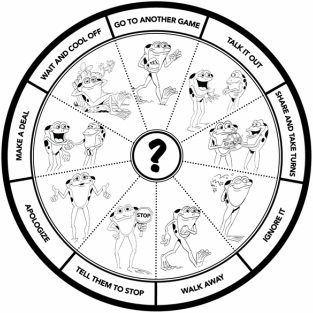
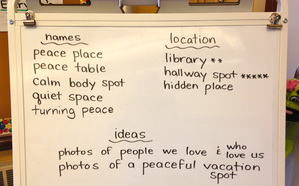
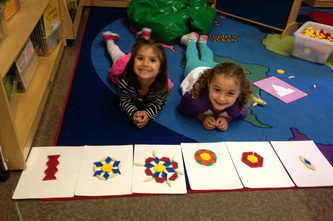
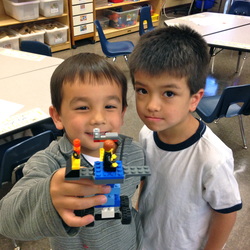
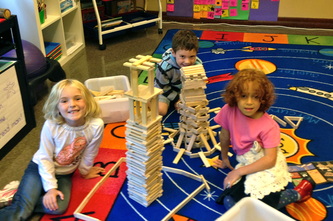
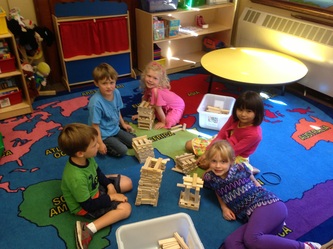
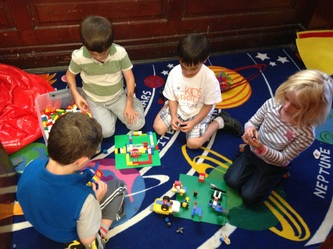
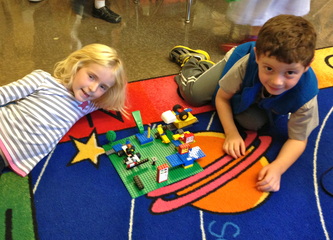
 RSS Feed
RSS Feed